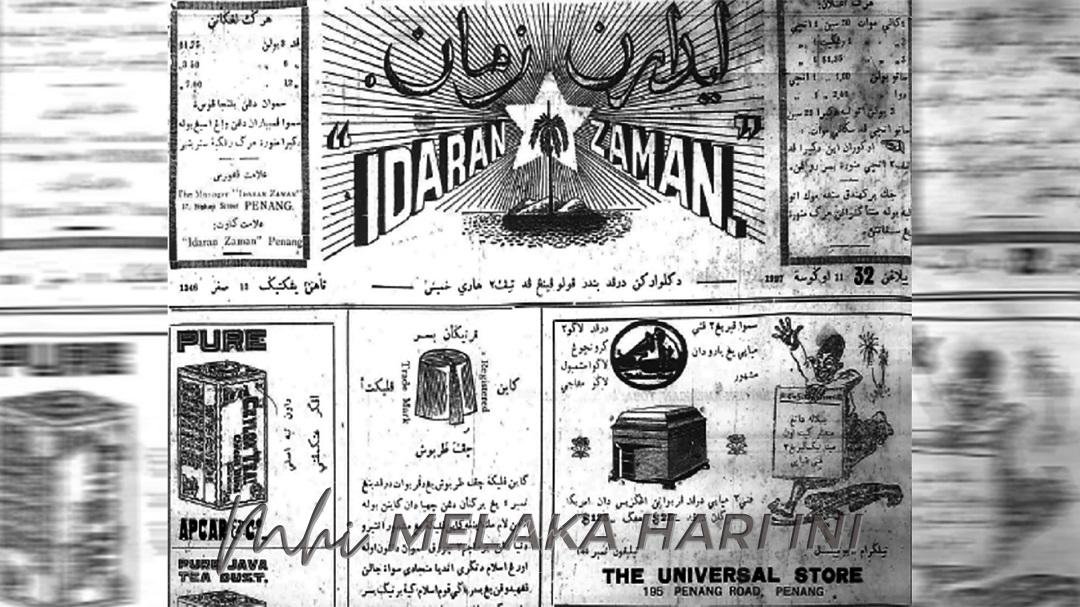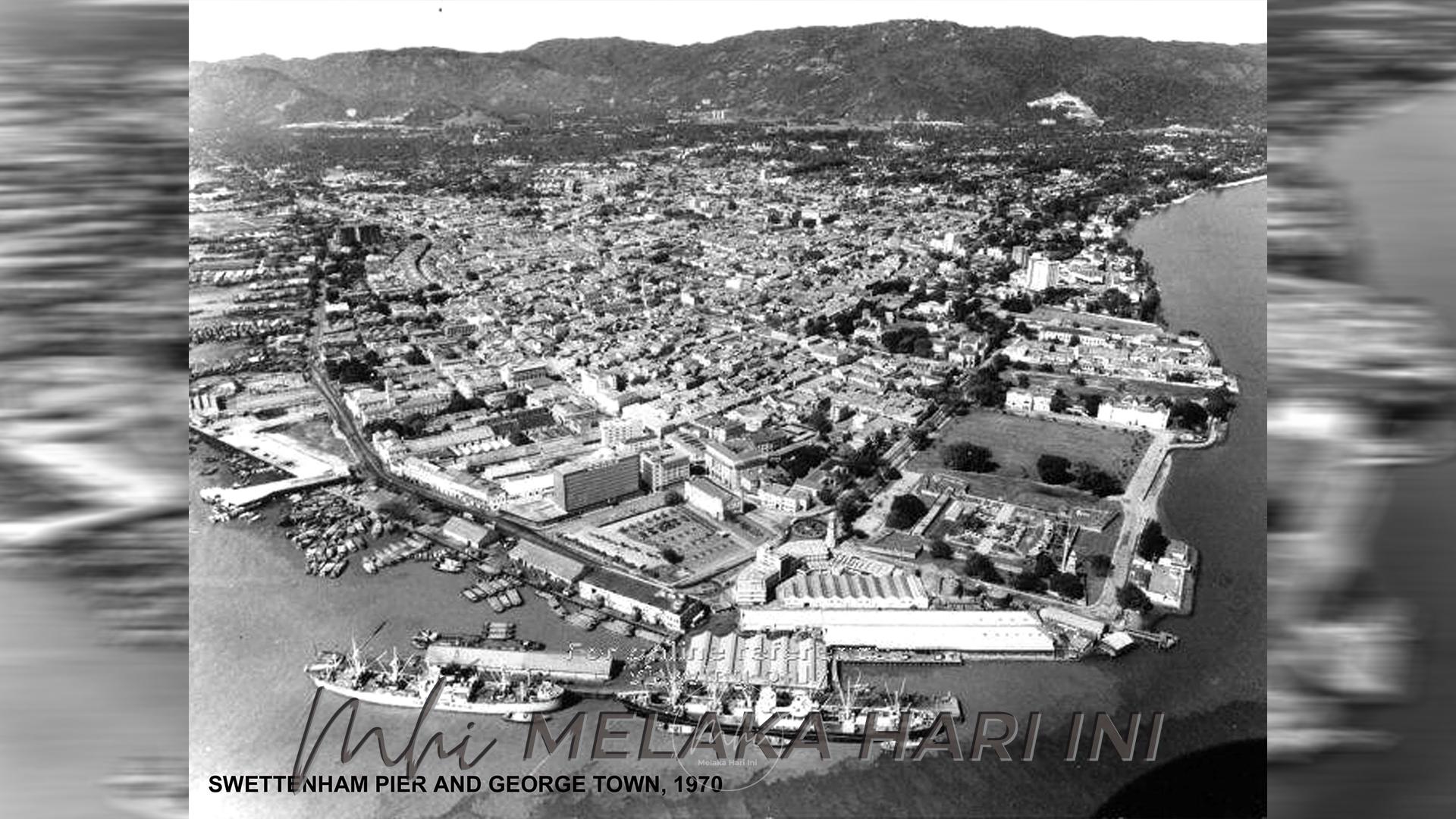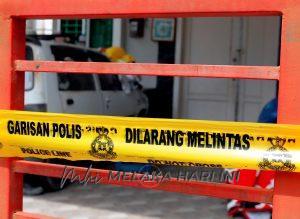
Khabar from Tanjong: Bahasa Melayu Newspapers in Early Pulau Pinang
EARLY Tanjong Malay life is understated. The Bahasa Melayu newspapers then provided a window to the dynamics of her cultural and intellectual expressions.
The early Pulau Pinang periodicals were all described as Jawi Peranakan-led editorials and publishing initiatives. The first newspaper in Pulau Pinang was Tanjong Penegeri, which appeared in 1894. It has a twice a week frequency. The newspaper stopped publication the year after. The name Tanjong Penegeri was thought to be a corruption of Tanjong Penaga, the space and place that occupied the geographical cape – its name plundered as George Town.
Tanjong Penegeri was succeeded by Pemimpin Warta (1895-7) and Lengkongan Bulan (1900 – 1). All were hand-lithographed, four-paged folio newspaper, with not much local news and comment. In March 1900, the first printed (as distinct from lithographed) Pulau Pinang newspaper began in the weekly Bintang Timor. It failed after 30 issues and was replaced shortly thereafter by Chahaya Pulau Pinang, which ran for eight and a half years, until March 1908.

Tanjong society in the first quarter of the 20th century was much aroused by the affairs of the declining Ottoman Empire. Chahaya Pulau Pinang provided regular reportage on Turkey and what was then called the Middle East, often translating portions from Egyptian and other foreign newspapers. The periodical was particularly illustrative of the changing interests and styles in Bahasa Melayu journalism and its consumption. Its only competitor was the Singapura-based Utusan Melayu of 1907. Utusan was part of the Singapore Free Press.
A news weekly appeared in Idaran Zaman in 1925, purveying news and comment with Islamic reformist interests. Its editor was Mohd. Yunus bin Abdul Hamid from Sumatra. In September the year after, Pulau Pinang had a new monthly – religious in outlook. This was Al-Ikhwan, under the editorship of Sayyid Shaykh b. Ahmad al-Hadi of Al-Imam (1906-08) fame. Historian William R. Roff through several of his Malay periodical bibliographic studies (1961,1971) tells us that though Al-Ikhwan, was also a social and even a political campaigner. The subjects and issues covered were diverse – from the emancipation of women, and the provision of more English education for Malays, participating fully in all the controversies of the time and “breaking lances with everybody from its fellow periodicals to the state religious authorities”
Al-Ikhwan was joined in 1928 by the weekly Saudara. These were the two publications from Sayyid Shaykh’s Jelutong Press. The Press played an important role in revitalizing Malay society of Tanjong.
Saudara, (Brother; Friend; Comrade, The Brethren) began as a weekly from 29 September 1928 until January 1932; thereafter twice-weekly until it ended sometime in 1941. Sayyid Shaykh exercised considerable editorial influence over it until his death in 1934. Like Al-Imam, Saudara’s aim was the introduction of religious reforms among the domiciled Muslims and of propagating Islam. It believes in peace and freedom of thought.
Tanjong, that area which is the geographical cape; as well as stretching to Air Itam, has a high concentration of Malay intellectuals and intelligentsia, especially before World War II. These group mainly comprised school teachers, religious teachers, the better educated in the civil service, merchants and philanthropists, were among the active segment of the population. And there were also journalists and writers.
As writers, contributors, correspondents, critics, editors, and consumers of the enterprise of journalism, they were influential in society. This group, which produced Panduan Guru in 1922, was regarded as the forerunner of the Seremban-based Majallah Guru in 1924. The periodical, perhaps equivalent to the American New Yorker, or the Atlantic, or closer to home Dewan Masyarakat, was to become one of the most influential Malay journals of opinion and comment before the Second World War.
The monthly was published under the auspices of the combined Malay Teachers’ Associations of Pulau Pinang, Selangor, Negeri Sembilan, and Melaka (joined later by those of Kelantan, Pahang and Singapura). Its editor Muhammad B. Dato’ Muda (1924 -1932) from Bukit Mertajam, has a close interest to Bahasa Melayu journalism. This column has also benefitted largely from his records and holdings, Tarikh Surat Khabar (Bukit Mertajam, 1940). Majallah Guru, besides publishing educational articles, commented regularly on public affairs, and nurtured a whole generation of Malay writers. It was the first Malay periodical to publish original fiction – the Malay cerpen (for cerita pendek). The Malay short story flourished.
The Malays of Pulau Pinang have been instrumental in the development of Bahasa Melayu journalism in Singapura. Apart from ‘importing’ its first Jawi Peranakan editor from Tanjong, the initiative of Paspam, a monthly periodical, inspired the Singapura-branch of the monthly Suara Pena in 1938.
Tanjong Malay society was largely engaged in educating itself, self-strengthening, in drawing the morals from events, and in seizing and improving the moment. Tanjong was urban. Literacy was high. In words of Roff, “there was time and a little money to spare. And electricity to see at night. “ These therefore created an audience, who asked to be entertained.
Social life in Tanjong saw an audience with the rise in the entertainment content of otherwise sober journals. Al-Ikhwan, with its ‘Rokambul’ detective stories. Under Sayyid Shaykh, short stories and serial novels began to appear more frequently.
The new literacy saw humorous sketches and versions of the traditional Pa’ Pandir Tales, riddles and jokes, columns, episodes of the Thousand and One Nights, and light weight “popular knowledge” articles on anything from the art of the conjuror to the history of ballooning. Al-Ikhwan provided what we would call “a good read” to Tanjong society.
NEXT WEEK: Jawi Peranakan
Prof. Dato’ Dr. Ahmad Murad Merican is Professor of Social and Intellectual History with the International Institute of Islamic Tho ught and Civilization, International Islamic University (ISTACIIUM). He is a Senior Fellow with the Southeast Asia Research Centre and Hub at De La Salle University, Manila, the Philippines.
